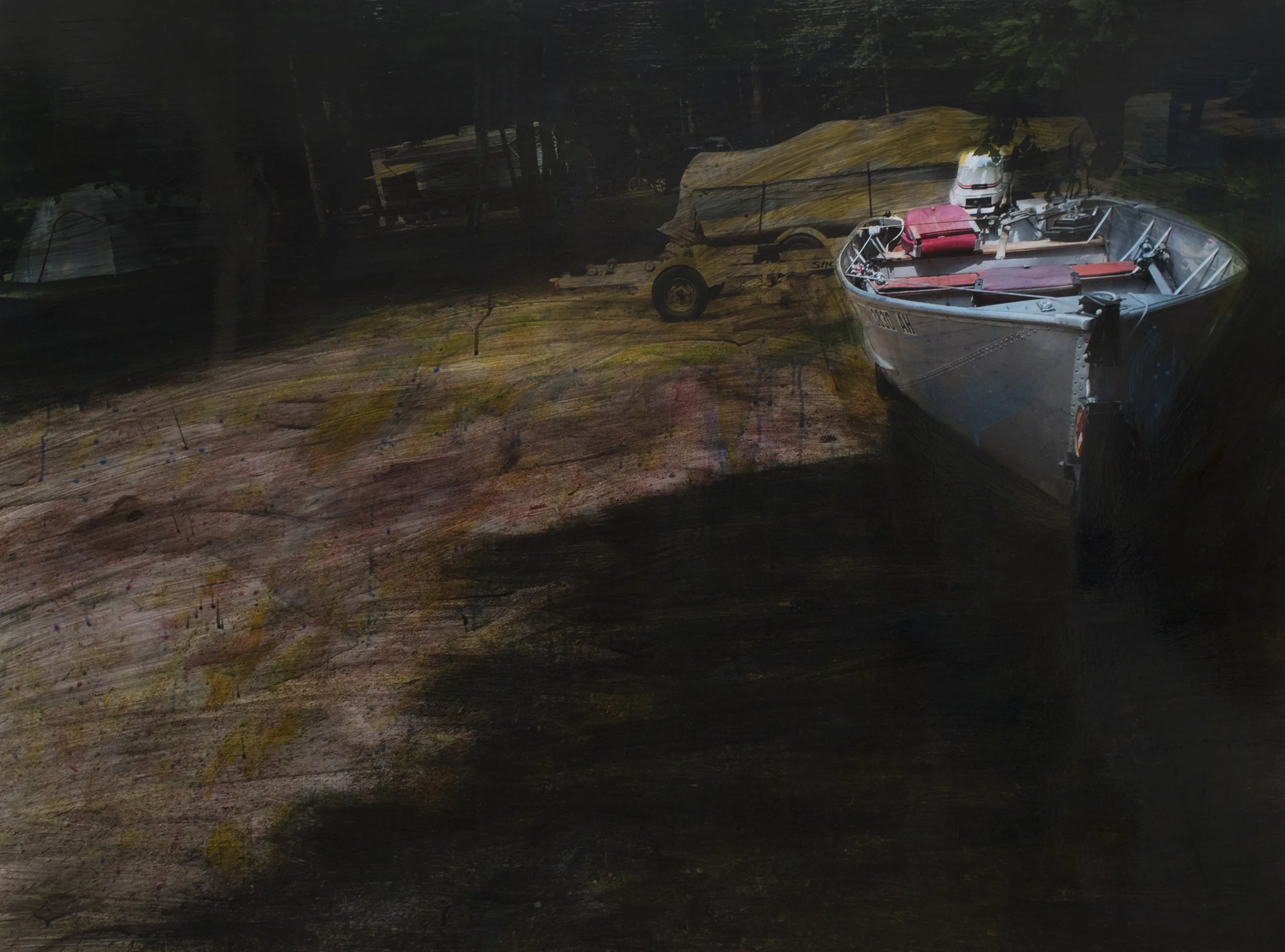Killing Frost
Killing Frost
In Erik Hougen’s installation, Killing Frost, this natural phenomena serves as both metaphor and backdrop. Using images, sound, and found objects, Hougen’s installation hints at interwoven narratives. His approach is influenced by filmmaking and the cinematic experience, supplying snippets that suggest a potential dual existence that is interconnected with the artist’s own.
Each year, in early fall and on the cusp of spring, the Killing Frost arrives. Happening only after warm clear days, the cold temperatures of this phenomenon can kill all but the hardiest of vegetation overnight. The fragile crystals of its enveloping freeze are as beautifully ethereal and intricate as they are deadly and destructive. For hundreds of years, those affected by its devastation have attempted to predict its impending arrival, but to no avail; instead each season they are held in suspenseful anticipation as The Killing Frost looms ominously along the edges of the most exquisite warm clear days.
In Erik Hougen’s installation, Killing Frost, this natural phenomena serves as both metaphor and backdrop. Using images, sound, and found objects, Hougen’s installation hints at interwoven narratives. His approach is influenced by filmmaking and the cinematic experience, supplying snippets that suggest a potential dual existence that is interconnected with the artist’s own.
Autobiographical pictures of his inner thoughts and experiences are interspersed with found photographs of people and places as a way to reference our connection to ourselves, each other and the universe at large. Objects both personal and discovered, provide clues that lead the viewer down a journey to solve an unsolvable mystery. The atmospheric soundtrack, composed by Hougen, sets a mood that leaves the viewer with a sense of anticipation and isolation, all set within the eeriness of the Killing Frost.
Hougen’s work is driven by the collective conscious of the American experience. Drawing from both found and personal photographs, he creates cinematic images of isolation that hint at narrative and collapse time and place. His work, both documentary and dream-like, depicts an America that is seemingly familiar, but blurs the line between fiction and reality. The results are quiet moments of absence and alienation that are haunting and mysterious.
In his digital collage KS, Hougen layers an oversized digital print to canvas, then paints over it with acrylic. His use of light and brushstrokes construct an unsettling quietude causing the viewer to strain to see what is hidden just out of sight.
For Killing Frost, Hougen uses a US Department of Agriculture map (originally drawn in 1916), illustrating the dates of the final Killing Frost of the year as charted across the United States. He has plotted points on the map to represent the specific people, places and events that he depicts in his work, as a way to physically map and examine how our lives and worlds are intertwined.
Also included in the installation are Tektite, or shattered meteoric rocks that the artist has collected from across the world. Throughout history these rocks and other black stones are thought to possess special or supernatural powers. Assuming their association, he see them as relics that serve as potential proof of another place or universe.
The installation Killing Frost incorporates the concept of the black mirror by playing with its dual purposes: to eschew perception and reveal a possible other existence. Providing only ungrounded images, Hougen takes the viewer on a circuitous search for meaning. There are no answers in Killing Frost, leaving the viewer with a subjective, unresolved, open and undefined experience because ultimately, in the end, all roads lead back to the self.
-text by Julie McKim
















